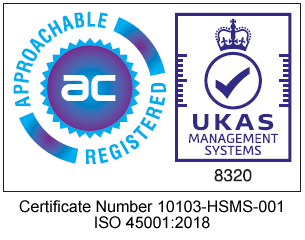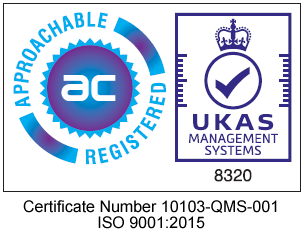Implementing ISO 9001 Certification
Find out more about our guide to implementing ISO 9001
The Complete Guide to ISO 9001 Certification
What is ISO 9001?
ISO 9001 is a standard which is related to the Quality Management System (QMS). It essentially defines the requirements for organisations or businesses to be more efficient, as well as comply better with customer satisfaction.
In bullet points, ISO 9001 includes:
- Independent Auditing
- Independent Inspections
- The writing and development of Quality Manuals
- The writing and development of Quality procedures
- The writing and development of bespoke Quality processes to meet your business needs
- The writing and development of manuals in accordance with ISO standards
Why Implement ISO 9001?
Implementing a QMS will push and motivate staff to exceed their key roles and responsibilities. Cost savings can be made with improved efficiency and productivity speed. Improvements can be developed from past deficiencies in the workplace, and this means less time wasted, fewer mistakes and more happy clients.
Customers will begin to notice that their orders are being completed more quickly and to the correct specification. The more happy customers you get, the more opportunities become open to the business/organisation.
Find our own ISO 9001 certification here:
How to Implement ISO 9001
ISO 9001 is actually one of the easiest ISOs to implement, and it’s a great idea to do so. Below are the steps we’d recommend to get you up and running:
- Understand why you want to become accredited
It’s critical that management of the business fully understands ISO 9001 and the benefits it can provide from a business perspective. They have to ensure all interested parties within the business are fully committed to quality.
- Buy a copy of the standard
Most of the time, this step includes finding a custom standard tailored to your sector. There may also be a specification for your country. They will most likely use the ISO standard as a baseline with small differences for legislation.
- Plan resources and processes
Your resources should be set to realistic timelines to ensure that the quality management system is implemented within a good amount of time. While the system is being developed, it’s definitely worth creating a project plan to be reviewed by higher management.
- Develop documentation
ISO 9001 requires documentation for the scope of the project, a quality policy, quality objectives, and a quality procedure for any outsourced processes. Depending on what year you’re reading this, these documents can change at any time, whether they are removed or something else is required.
- Implement and get certified
After you’ve sorted out any outstanding documentation, it’s time to perform the certification. Ideally, you would choose a provider that has had actual experience in your industry of work. This is normally done in two stages, that being a “readiness” review, and the second being an official audit and certificate. This will be awarded on completion of the stage.
Final Steps
We have a page dedicated to the ISO 9001 Management System Services certification, so you can read more about the standard.
In case you’re unsure of anything, feel free to contact us to discuss your QMS requirements, or if you need help with getting certified. We’re always happy to help and will aim to get back to you as soon as possible.
Get In Touch With Us
Please feel free to call / email us, or simply fill out this form and we’ll get back to you as soon as possible!


